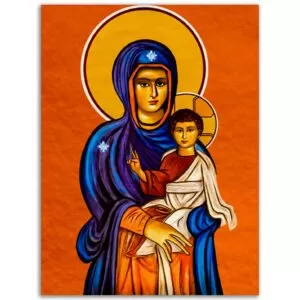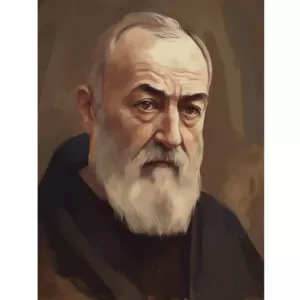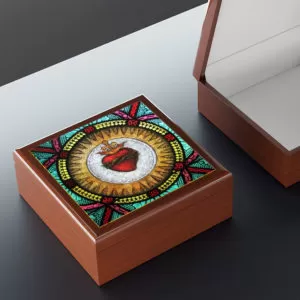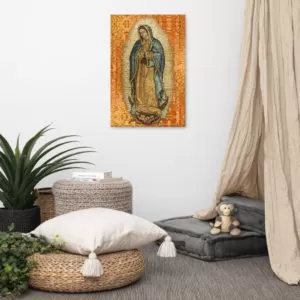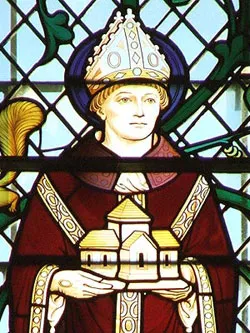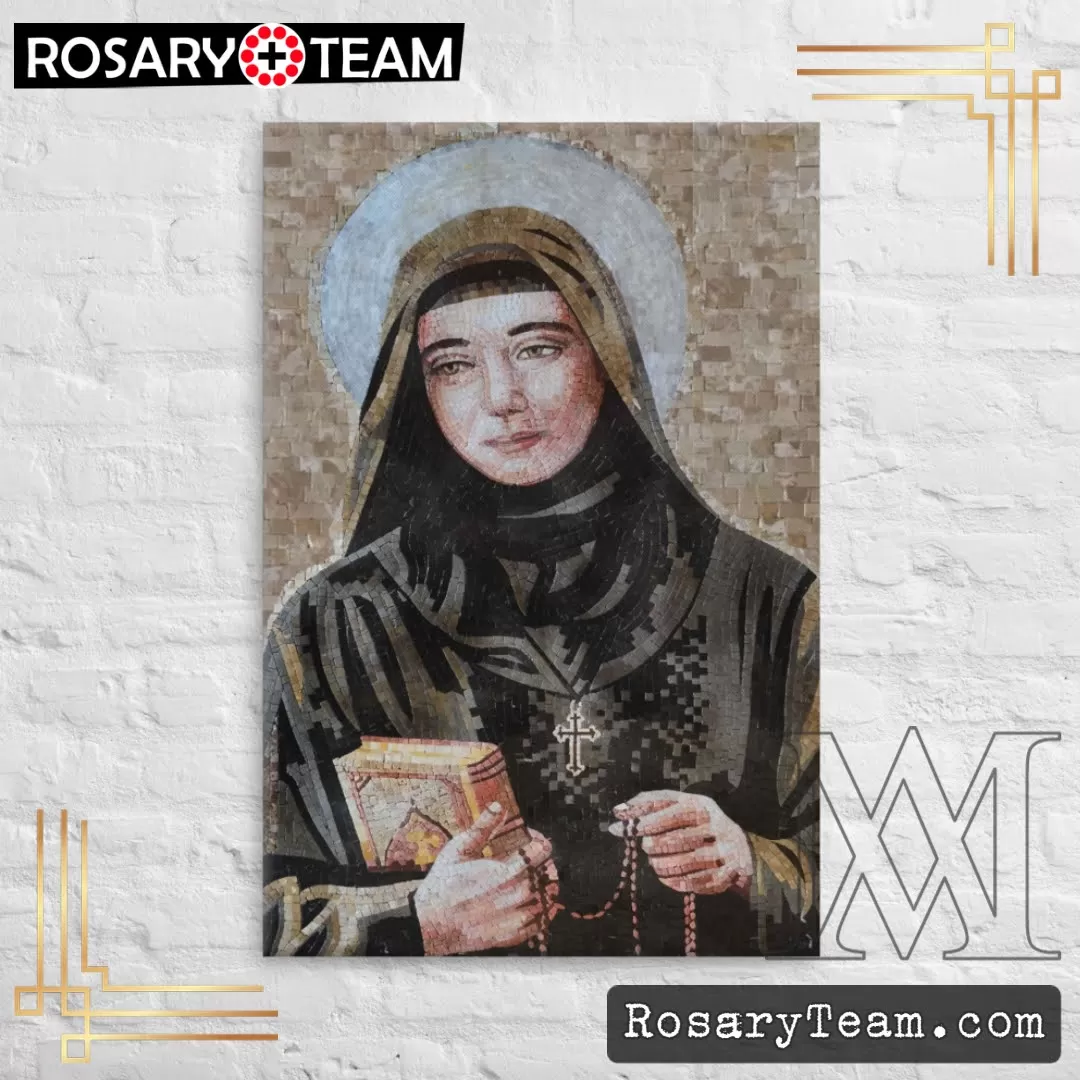SAINT MARY MAGDALEN

SAINT MARY MAGDALEN
The Gospel of Saint Luke tells us that Saint Mary Magdalen learned that Jesus was dining at the house of Simon, a Pharisee, and without waiting for an invitation or an introduction of any kind, she burst through the guests to get to Him. Mary Magdalen, the daughter of a rich and noble family, was reputed a great sinner. Tears, kisses, the highest priced oils that money could buy, and hair were her substitutes for words.
Simon, the Pharisee who had invited Jesus to dinner, complained within himself saying: “If this man was a prophet surely he would know who and what manner of woman this is that touched Him.” Our Lord quickly defended Saint Mary Magdalen. “Simon,” He said, “I have something to say to thee. I entered into thy house, thou gavest Me no water for My feet but she with tears hath washed My feet with her hair has wiped them. Thou gavest Me no kiss; but she, since she came in, hath not ceased to kiss My feet.” Then Our Lord uttered His glorious tribute: “Wherefore I say to thee: Many sins are forgiven her because she hath loved much.” Jesus said to Saint Mary Magdalen, “Thy sins are forgiven thee.”
After her meeting with Jesus in the house of Simon, the Pharisee, Saint Mary Magdalen gave herself up entirely to the service of her Lord.She became one of the holy women who followed Jesus in His travels in Galilee, and up to Jerusalem. For two years she accompanied Him, listening to Him preach, drinking in His words of eternal life, and ministering to Him and his Apostles.
Saint Mary Magdalen anointed Our Lord’s feet a second time in the house of Simon the Leper. His house was very near her own in the little village of Bethany where she lived with Martha, her sister, and Lazarus, her brother, whom Jesus had raised from the dead. Saint Mary Magdalen’s anointing was in order to comfort the body that was soon to be hung on the Cross for the redemption and salvation of the world. It was six days before the Passion, and it was the sabbath. A dinner had been prepared in the house of Simon to honor Jesus. Mary took the precious ointment which she had brought in an alabaster box and poured it on the head which was soon to be crowned with thorns. She wiped with her hair the dust from the poor feet which were soon to be pierced with nails and anointing and kissed them.
Judas Iscariot, the Apostle who was about to betray Jesus, cried out in anger against Saint Mary Magdalen. “Why was not this ointment sold for three hundred pence and given to the poor?”. Saint John tells us that Judas said this, not because he cared for the poor, but because he was a thief and having the purse he had the money which the purse contained.
Jesus knowing this, said to Judas, “Why do you trouble this woman? For she hath wrought a good work upon Me. For the poor you have always with you: but Me you have not always. For she in pouring this ointment upon My body, hath done it for My burial. Amen I say to you, wheresoever this Gospel shall be preached in the whole world, that also which she hath done, shall be told for a memory of her.”
Saint Mary Magdalen followed Jesus through each step of His cruel Passion. She was at His side at every possible moment on the road to Calvary. She stood by the Cross of Jesus, with Mary, His Mother, and Mary of Cleophas, and John the Beloved Disciple. She stood for three hours, and His blood fell, drop by drop, on her hair. And His death was her martyrdom.
She followed Him to His grave, and she wept all through Good Friday night and all the next day. It was the festival of the Pasch and she was forbidden to go to His tomb. At sunset on Holy Saturday, when the Pasch was over, she hastened to buy spices with which to anoint His body. Very early on Sunday morning she and the other holy women set out for His sepulchre. They reached the tomb of Jesus just as the sun rose. They were worried as to how they would take away the heavy stone before the door of the sepulchre but they found it already rolled back. They looked into the tomb but for the body of Jesus was no longer there. Saint Mary Magdalen ran back to tell Peter and John. “They have taken away the Lord out of the sepulchre,” she cried, “and we know not where they have laid Him!”
Saint Peter went into the sepulchre, and Saint John after him, and they beheld the linen cloths with which the body of Jesus had been wrapped, lying there, and the napkin which had bound His sacred head, placed apart from the other linens. They doubted no longer what Saint Mary Magdalen had told them and returned to bring the news to all the Apostles.
Saint Mary Magdalen stood weeping for Jesus. She stooped down and looked into the sepulchre and saw two angels in white one sitting at the head and one at the feet where the body of Jesus had been laid. “Woman, why weepest thou?” one of the angels asked her. “Because they have taken away my Lord, and I know not where they have laid Him,” she answered. When she said this she turned back and Jesus was standing beside her. But she did not know it was Jesus.
Jesus said to her, “Woman, why weepest thou? Whom seekest thou?” She,
thinking that it was the gardener, said to Him: “Sir, if thou hast taken Him hence, tell me where thou hast laid Him, and I will take Him away.” Immediately she knew it was Jesus.
“Master!” she answered Him. And she fell down on her knees before Him.
Saint Mary Magdalen, with the other holy women who had followed Him during His public
life, saw Jesus several times during the forty days He remained on earth after His resurrection. She was present at His Ascension into Heaven, and accompanied Our Lady when she and the Apostles and disciples “adoring, went back into Jerusalem with great joy” after the Ascension.
Saint Luke tells us that Jesus led His followers, “out as far as Bethany: and lifting His hands, He blessed them. It came to pass, whilst He blessed them, he departed from them and was carried up to Heaven.” Bethany, the village where Saint Mary Magdalen’s family lived, was close to the Mount of Olives, from which Jesus ascended into Heaven.
Fourteen years after Our Lord’s death Mary Magdalen, Martha, their serving-maid (Sara), the two Marys (one the mother of James the Less, and the other Mary Salome the mother of James the Greater), John the Beloved Disciple, the man blind from birth who had been cured by Our Lord (Sidonius), Maximin and the disciple were obliged to flee for their lives in a boat which had no sails or oars. The boat drifted to the mouth of the Rhone River, in France. The two Marys and Sara settled there. Saint Lazarus chose Marseilles for his apostolate and he became its first bishop.
Saint Mary Magdalen went apart into a cave in France to spend the remaining thirty years of her life in pure contemplation. Every day the angels carried her up into the air to hear the celestial choirs singing and praising God. Every day at every hour she was lifted up in the air by the angels and heard the glorious song of the heavenly companies with her bodily ears. She was fed and filled with right sweet meats and brought again by the angels unto her proper place.
rosary.team







